
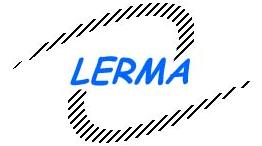


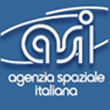
 Ecole
Internationale Daniel Chalonge
Ecole
Internationale Daniel Chalonge 





 Ecole
Internationale Daniel Chalonge
Ecole
Internationale Daniel Chalonge 
Workshop CIAS Meudon 2012
WARM DARK MATTER GALAXY FORMATION
IN AGREEMENT WITH OBSERVATIONS
CIAS Observatoire de Paris, Château de Meudon, Meudon campus
6, 7 and 8 June 2012
Support to the
James Webb Space Telescope

Practical informations (.pdf)
Click to download the poster (.pdf)
Programme and Lectures (.pdf)
List of Registered Participants (.pdf)
Album Photos
Highlights and Conclusions
1.
Summary:
A Turning Point operated recently in the Dark Matter research: Warm Dark
Matter (WDM) emerged
impressively over Cold Dark Matter (CDM) as the leading Dark Matter candidate. WDM solves naturally the problems of CDM
and agrees with the observations at small as well as large and cosmological scales.
This workshop addresses WDM putting together astrophysical. cosmological and particle WDM, astronominal observations,
theory and WDM numerical simulations which naturally reproduce the observations at all the scales. The Workshop addresses
as well the experimental search for the WDM particle candidates (keV sterile neutrinos).
2. The New Dark Matter Situation Today: Warm Dark Matter (WDM) research is progressing fast, the subject is new and WDM essentially works, naturally reproducing the astronomical observations over all scales: small (galactic) and large (cosmological) scales (LambdaWDM). Astronomical evidence that Cold Dark Matter (LambdaCDM) and its proposed tailored cures do not work at small scales is staggering. Astrophysical constraints including Lyman alpha bounds put the sterile neutrino mass m in the range 1< m <13 keV. WDM predictions for EUCLID and PLANCK start to to be available. MARE and an adapted KATRIN experiment could detect a keV sterile neutrino. It will be a fantastic discovery to detect dark matter in a beta decay. A formidable WDM work to perform is ahead of us.
3.
History, Context and the CDM crisis:
This Workshop is the
third of a new Chalonge series in Meudon dedicated to Dark Matter.
The first Workshop of this series (June 2010) allowed to identify and
understand the issues of the serious problems faced by Cold Dark
Matter (CDM) to reproduce the galactic (and even cluster of galaxies)
observations. The 2010 and 2011 Workshops served as well to verify
and better understand the confusion in the CDM research, namely the
increasing number of cyclic arguments, and ad-hoc mechanisms
introduced in the CDM simulations over most of twenty years, in
trying to deal with the CDM small scale crisis: Cusped profiles and
overabundance of substructures are predicted by CDM. Too many
satellites are predicted by CDM simulations while cored profiles and
no such overabundant substructures are seen by astronomical
observations.
On the CDM
particle physics side, the situation is no less critical: So far, all
the dedicated experimental searches after most of twenty years to
find the theoretically proposed CDM particle candidate (WIMP) have
failed. The CDM indirect searches (invoking CDM annihilation) to
explain cosmic ray positron excesses, are in crisis as well, as wimp
annihilation models are plagued with growing tailoring or fine
tuning, and in any case, such cosmic rays excesses are well explained
and reproduced by natural astrophysical process and sources. The
so-called and repeatedealy invoked ‘wimp miracle’ is nothing but
been able to solve one equation with three unknowns (mass, decoupling
temperature, and annihilation cross section) within wimp models
theoretically motivated by SUSY model building twenty years ago (at
that time those models were fashionable and believed for many
proposals).
After more
than twenty years -and as often in big-sized science-, CDM research
has by now its own internal inertia: growing simulations involve
large super-computers and large number of people working with; CDM
particle wimp search involve large and long-time planned experiments,
huge number of people, (and huge budgets); one should not be
surprised in principle, if a fast strategic change would not yet
operate in the CDM and wimp research, although its interest would
progressively decline.
4. The Workshop addresses the last progresses made in Warm Dark Matter and the Universal and Non Universal properties of Galaxies. In the tradition of the Chalonge School, an effort of clarification and synthesis will be made by combining in a conceptual framework, theory, analytical, observational and numerical simulation results. The subject will be approached in a threefold way:
(I) Conceptual context: Dark Matter in cosmology and astrophysics: perspective and prospective of the research in the subject: Theory and observations. The emergence of Warm (keV scale) Dark Matter from theory and observations.
(II) Astronomical observations : galaxy structural properties, the universal and non universal properties of galaxies, high quality rotation curves, kinematics, density profiles, gravitational lensing, small and large structures, deep surveys and clusters of galaxies
(III) Numerical simulations with Warm Dark Matter, large structures, structures and substructures.
Special attention will be payed to the astrophysical understanding of the dark matter problems, the use of analytic and numerical methods which determine the properties, the density profiles and distribution and the nature of Warm Dark Matter.
____________________________________________________
FORMAT
All Lectures are followed by a discussion. All participants are invited to take part in the discussions.Enough time will be available for the discussions.
The Meeting is open to all scientists interested in the subject. Registration is mandatory. Registration information is given below.
The format of the Meeting is intended to allow easy and fruitful mutual contact and communication.
Sessions last for three full days in the beautiful and green Meudon campus of Observatoire de Paris in the historic Castle with the Great Dome building ("Château Grande Coupole") where CIAS (Centre International d´ Ateliers Scientifiques) is located.
All lectures and presentations will take place at the Castle Conference Room (Salle de Conferences du Château) in the historic Castle building.
All Coffee-Tea breaks will take place at the Urania Hall aside the castle conference room in the same building. The Registration desk and the Secretariat of the Workshop take place at the Urania Hall.
Discussions and working sessions all during the workshop will take place at the CIAS rooms aside the Urania Hall.
SOC et LOC :
N.G.Sanchez, H.J de Vega, P.Biermann, M.C.Falvella
N.Letourneur, D.Lopes, S.Cnudde, D.Zidani
PROGRAMME and LECTURERS
Nicola C.
AMORISCO (Institute of Astronomy, Univ of Cambridge, Cambridge, UK)
Dark matter cores and cusps: the case of multiple stellar populations in dwarf spheroidals.
Peter
BIERMANN (MPI-Bonn, Germany & Univ of Alabama, Tuscaloosa, USA)
Warm Dark Matter overview: cosmological and astrophysical signatures.
Pier Stefano
CORASANITI (CNRS LUTH Observatoire de Paris, Meudon, France)
The Mass Halo Function and halo models
Subinoy
DAS (Inst. für Theoretische Teilchenphysik und Kosmologie RWTH, Aachen Univ., Aachen, Germany)
Cosmological Limits on Hidden Warm Dark Matter
Hector
J. DE VEGA (CNRS LPTHE Univ de Paris VI, France)
Warm Dark Matter from theory and galaxy observations
Ayuki
KAMADA (IPMU Inst. Physics & Mathematics of the Universe, Univ of Tokyo, Japan)
Structure Formation in Warm Dark Matter Models.
Igor D.
KARACHENTSEV (SAO-Special Astrophysical Observatory, Nizhnii Arkhyz, Russia)
Cosmography of the Local Universe.
Wei
LIAO (Inst.Modern Physics, East China Univ.Science & Technology, Shanghai, P. R. China)
On the detection of keV scale neutrino Warm Dark Matter in Beta decay experiments.
Marco
LOMBARDI (University of Milano, Italy)
Star Formation Rates in Molecular Clouds and the Nature of the Extragalactic Scaling Relations
Marc
LOVELL (Inst. Comput. Cosmology, Univ Durham, Durham, UK)
Numerical simulations of WDM halos
Angelo
NUCCIOTTI & Elena FERRI (INFN Milano Biccoca, Italy)
The MARE experiment to measure the mass of light (active) and heavy (sterile) neutrinos
Manolis
PAPASTERGIS (Centre Radiophysics. & Space Research, Cornell Univ, Ithaca NY, USA)
The velocity width function of galaxies from the ALFALFA survey: Dark matter implications.
Jorge
PENARRUBIA (Instituto Astrofísica Andalucía - IAA-CSIC, Granada, Spain)
Measuring the Dark Mass Profiles of Dwarf Spheroidal Galaxies.
Werner
RODEJOHANN & He ZHANG(Max-Planck-Inst. für Kernphysik, Heidelberg, Germany)
Sterile Neutrinos for Warm Dark Matter in Flavor Symmetry Models.
Norma
G. SANCHEZ (CNRS LERMA Observatoire de Paris, Paris, France)
Warm Dark Matter Galaxy Formation in Agreement with Observations
Patrick
VALAGEAS (Inst. de Physique Théorique, Orme de Merisiers, CEA-Saclay, Gif-sur-Yvette, France)
Perturbation approaches and halo models for large-scale structures and related issues
Casey
WATSON (Millikin Univ, Dept Physics & Astron., Decatur, Illinois, USA)
Using X-ray Observations to Constrain Sterile Neutrino Warm Dark Matter
Jesús
ZAVALA (Univ Waterloo, Dept Phys & Astr, Ontario, Canada)
The velocity function of galaxies in the local environment from Cold and Warm Dark Matter simulations
And Other LECTURERS
-------------------------------------------------------------------------
Local and practical information can be found below.
REGISTRATION
The Meeting is open to all scientists interested in the
subject but Registration is mandatory. Registration fee is 60 Euros.
The registration fee covers the 6 coffee-tea breaks, the tickets for
the 3 lunchs and the cocktail/reception. The registration fee must be
paid cash to the Secretary of the Workshop (not by credit card, nor
by check) at the registration desk on the 1st day of the Workshop
(Wednesday 6 June 2012).
[The Lunch tickets you will receive at the Workshop Registration include for Each Lunch at the Observatory
self-restaurant in Meudon the following six items: Entry/appetizer. Main course. French cheese or green salad. Dessert (cakes or
fruits or yoghurt). Drink (wine, beer or mineral water or other soft drinks). Coffee or Tea . For Each item a variety of choices
is proposed every day (meat, fish, chicken, vegetarian, with their garnitures). Also, one can skip one item and have instead
another item twice].
Certificates of participation and receipts will be delivered by the Secretariat during the Workshop upon request.
Participants wishing to attend the Meeting should register in time, by on line registration (on the top of this page)and in any case
BEFORE 1st MAY 2012
An automatic mail is sent to you after your on line registration.
EARLY
REGISTRATION IS STRONGLY ENCOURAGED
The LIST of Registered confirmed Participants will be posted in May. BADGES for all registered confirmed participants in the list will be available at the Registration desk from Wednesday 6 June at 8:10 am.
Please wear your badge all during the Workshop, which will make easy your access and circulation within the Paris Observatory Meudon campus.
Contact:
Workshop Secretariat: Nicole.Letourneur@obspm.fr
We look forward to seeing you in Meudon for a creative, fruitful and enjoying meeting.
Participants should make their reservations by their own. A list of hotels in Paris nearby Montparnasse station is provided below.
TIMING AND LOCATION
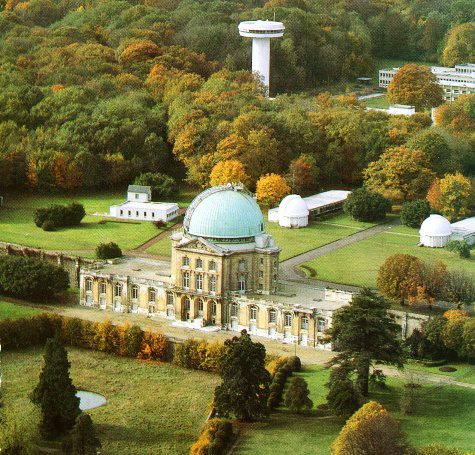
Welcome of the participants and Registration starts on wednesday 6 June at 8:00 am at the Urania Hall in the historic Meudon Castle ("Château de Meudon"). Tickets for lunch will be on sale at the registration desk from Tuesday morning.
Lectures start on Wednesday 6 JUNE at 8:00 am in the Castle ("Chateau") CIAS building .
We shall strictly stick to the timetable during the whole meeting.
All lectures and events will start at the indicated times sharp.
All sessions take place in the historic Castle ("Château" building) where CIAS is located ,
All COFFEE-TEA-MATE-CHAMPAGNE BREAKS take place in the Urania Hall in the CIAS Château building.
LUNCH is served at the Self-service Restaurant of Observatoire de Paris at Meudon (located very near from the "Château" building, inside the Meudon campus, around the pond).
The PHOTO of the group will be taken in the middle of one of the main entries of the "Chateau".
The COCKTAIL/RECEPTION for all participants and accompanying persons will be offered on FRIDAY 8 JUNE in the late afternoon at the terrasse (if weather allows it) aside Urania Hall; otherwise, inside the Castle.
Please Notice: The Workshop ends after the COCKTAIL/RECEPTION in the late afternoon of Friday 10 June. All participants and lecturers are expected to stay untill the end of the Meeting.
LOCATION : The entrance of the Observatoire de Paris at Meudon is 5, Place Jules Janssen, F-92 190 Meudon (see below how to reach Meudon).
Lunch is served at the Self-service Restaurant of Observatoire at Meudon (located very near from CIAS Castle, inside the Meudon campus, around the pond). The tickets for lunch will be available at the Conference registration desk from Thursday morning.
On Friday, there will be a Cocktail/Reception in the the
late afternoon in the Urania Hall/terrasse.
The Observatoire Self-Service Restaurant is closed for dinner and on Saturdays /Sundays.
Some Restaurants are listed below.
HOW TO REACH MEUDON OBSERVATORY
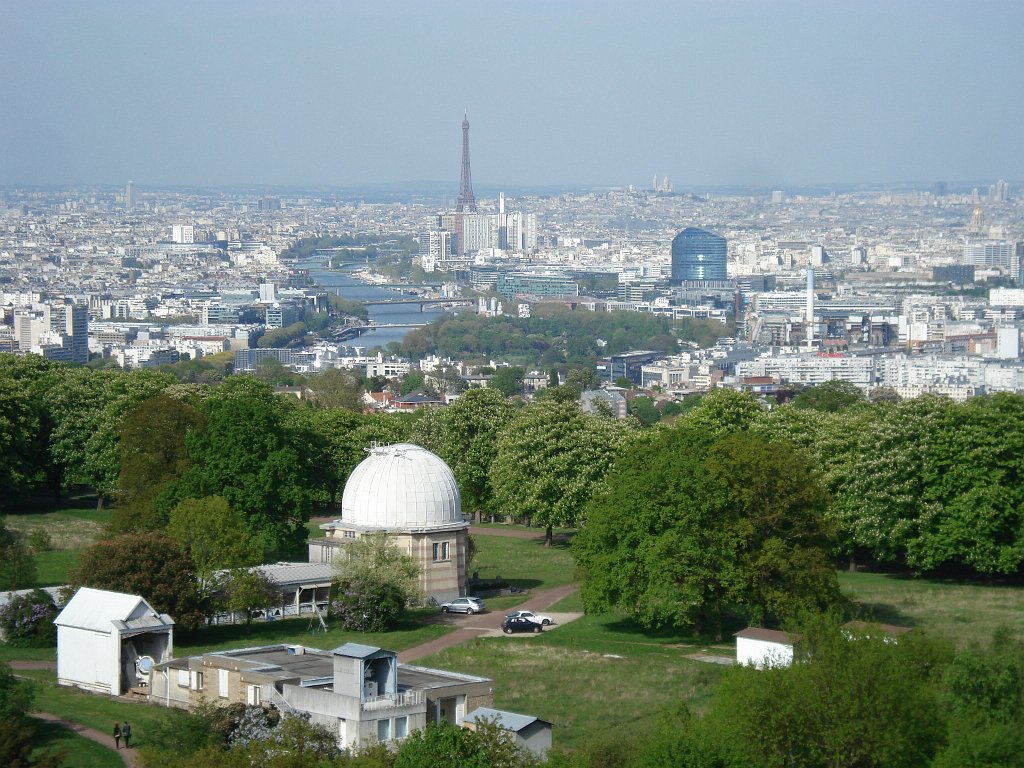
Address : 5, Place Jules Janssen, F-92 190 Meudon .Tel: 01.45.07.75.30 .Fax: 01.45.07.74.69
![]() Longitude
: 2° 14' East . Latitude : 48° 48' North
. Altitude : 162m
Longitude
: 2° 14' East . Latitude : 48° 48' North
. Altitude : 162m
Meudon Observatory is located Place Jules Janssen , in Meudon at the top of the Avenue du Château.
By train. The best way for visitors to reach Meudon Observatory is from Paris-Montparnasse train station and to stop at Bellevue station (recommended stop). The travel duration by train from Paris Montparnasse to Bellevue station is about 12 minutes. Recommended way is the following:
By train (French railways - SNCF): At Paris-Montparnasse station, take the train going to Sèvres or to Versailles-Chantiers, Rambouillet, Chartres, (which frequency is every 15 min.). Make sure that the train stops at the Meudon or Bellevue stations. Get out at the 4th station: Bellevue (after Vanves-Malakoff, Clamart and Meudon stations).
Once outside Bellevue station, turn left (passing the church aside the station) and take the green Avenue du Château bordered by trees: the entrance of the Observatory is on the top of the hill. About a 10/15 minutes walk to reach the gates of the Observatory. [There is also a mini bus (circular local line) from the Bellevue station to the Observatory].
If you stop at the Meudon station: outside the station, turn to the right, after 200 m turn again to the right to take avenue Corbeiller [where the Meudon Municipality is located (Mairie de Meudon), ahead up to the top of the hill along avenue Corbeiller, rue Jacqueminot lined with stately chestnut trees.
Once arrived, use the map of the Observatory campus: Chateau Grande Coupole CIAS where the meeting takes place, (building 9 in the map) is on the terrasse (take the staircase in the garden at the left after the entry and then at the left straight on the road along the terrasse bordered by the chestnut trees.
By car there are 2 possible routes : Take the périphérique, exit at Quai d Issy, then go towards Issy les Moulineaux, Sèvres and finally Meudon Take N 118, from the Pont de Sèvres, going towards Chartres Orléans, exiting at Meudon Sèvres and then going towards Meudon.
HOTELS IN PARIS MONTPARNASSE
Hôtel du Maine; 16 Rue Maison Dieu, Paris, 75014
Hôtel Ibis; 71 boulevard de Vaugirard, Paris, 75015
Hôtel Montparnasse-Daguerre; 94 rue Daguerre, Paris, 75014
Hôtel Campanile - Maine Montparnasse; 146 Avenue du Maine, Paris, 75014
Hotel l'Aiglon, 232 boulevard Raspail, metro Raspail, tel. 33 (0) 143208242,
Hotel Delambre 35 rue Delambre, metro Edgar Quinet, tel. 33 (0) 145389176, delambre@club-internet.fr
Hotel de la Paix, 225 boulevard Raspail, metro Raspail,tel. 33 (0) 143353263, rela@hoteldelapaix.com
Mercure Raspail Montparnasse, 207 bd Raspail, Paris 75014 .Tel.33 (0). 14320-6294, fax 33(0).14327-3969.
Hotel du Midi, 4, Av. René Coty, Paris 75014. Metro : Denfert-Rochereau. tel. 33(0).14327-2325. fax 33(0).14321-2458. FIAP Jean Monnet, 30 rue Cabanis, 75014 ParisTel. 33(0)1-4313-1700. Fax 33(0)1-4581-6391.
SOME RESTAURANTS IN PARIS MONTPARNASSE
La Closerie des Lilas, 171, boulevard Montparnasse. Tel. 014051-3450.Open everyday till 1 am.
Formerly a Café littéraire had as customers Baudelaire, Verlaine, Gide, Jarry, Apollinaire, Modigliani, Hemingway, Lenin and probably Trotsky. Keeps a litterary crowd of customers like Philippe Sollers. The present chef Jean-Pierre Cassagne has renovated the house and the excellent meals. Besides the restaurant there is `brasserie' where meals are alsoserved. Menu 43 euros (including wine), à la carte 90 euros.
La Rotonde Montparnasse, 105 bd. Montparnasse, Tel. 0143266884. Open every day from 12 am till 1pm.
www.rotondemontparnasse.com Typical parisian restaurant since 1911. Seafood, oysters, famous Salers entrecote, good fish, selected Auvergne cheese and good desserts. Landmark of the Montparnasse district had as regular customers artists, musicians, writers and politicians: Modigliani, Picasso, Soutine, Cocteau, Diaghilev, Debussy, Nijinski, Stravinsky, Man Ray (and Kiki), Breton, Aragon, Prevert, Queneau, Hemingway, Gershwin, Henry Miller, Scott Fitzgerald. Meetings of Trotsky with fellow bolcheviks in the first floor room to organize the 1917 russian revolution were often interrupted by the french police. Menus 35 and 43 euros.
La Coupole, 102 bd. Montparnasse, Tel. 0143201420. Open every day from 12 am till 1 pm.
Typical Art Deco parisian restaurant open in 1927. Seafood, salmon rilletes, abundant sauerkraut, fresh codfish a la plancha, entrecote with french frites, lamb curry india style, excellent desserts. Among regular customers in the past: Cocteau, Prevert, Sartre, Beauvoir, Picasso (who met here Dora Maar), Matisse, Piaf, Montand.
--------------------------------------------------------------------------
THE PARIS OBSERVATORY AT MEUDON : A BRIEF HISTORY
At present the Observatoire de Paris owns three campuses: Paris, Meudon and the radioastronomy station at Nançay. More than 700 scientists, technicians and administrative staff work there.
The history of the present Meudon Castle (Château de Meudon) starts several centuries ago.
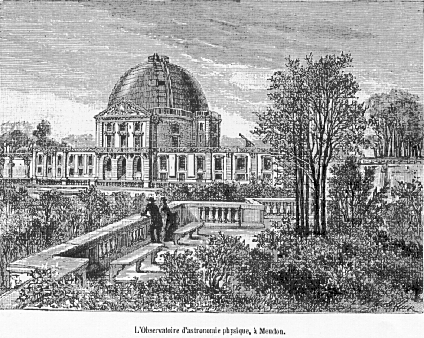
The new Château de Meudon over where the cupola of the Meudon Observatory is installed was built in 1706 by the great architect Jules-Hardouin Mansart in orders by King Louis XIV for his son the Grand Dauphin. This was the last important project realized by Mansart. The gardens and water fontaines were constructed under the plans by Le Nôtre. Important visitors stayed in the Château de Meudon in the XVIII century as the Zar of Russia Peter the Great and the King of Poland Stanislas Leszczyski.
After the French Revolution, a workshop to construct military balloons was settled in the area. These balloons played an important rôle in the Fleurus battle against Austria in 1794. Napoleon restaured the Château de Meudon and the Empress Marie-Louise and their son (the King of Rome) lived in the Castle.
The terrasse was used by the prussians to shell Paris during the siege of 1870. The Château de Meudon took fire at that time.
In 1876 the astronomer Jules Janssen created the Meudon Observatory and in 1893 a refraction telescope was installed over in the Castle.
----------------------------------------------------------------------
Musée - Atelier Rodin , Villa des Brillants Beaux-Arts. House-workshop and garden of the artist. Original casts of the work of the great sculptor. The Tomb of the sculptor with one his versions of the "The Thinker".
Musée d'Art et d'Histoire de la Ville de Meudon Beaux-Arts - Histoire
Fondation Arp à Clamart 1.8 km (sud-est limit of the Meudon forest). House-workshop and garden of the artists Jean Arp and Sophie Taeuber who designed the house in 1960. Epured Cubism. Abstraction and Dadaisme. Kandinsky "Blaue Reiter"mouvement of 1912. Max Ernst, Tristan Tzara, Constructivist Théo Van Doesburg. Original and asttonishing constructions in the "Triangle des Châtaigniers" (Chestnuts Triangle) designed by Chemetov, Déroche and Lecaron architects.
---------------------------------------------------------------------
International School of Astrophysics 'D.Chalonge'
Back to Chalonge School Page <http://chalonge.obspm.fr>
--------------------------------------------------------------------------------------------------------